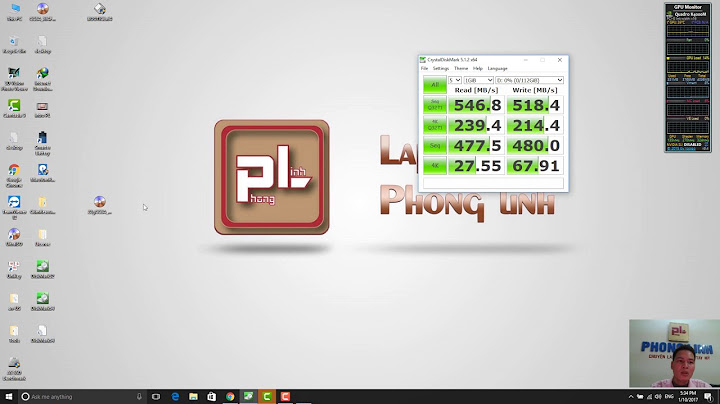Tính năng nào của Sony tốt hơn cho chụp chân dung? Đó có phải là sự linh hoạt của lens có độ zoom lớn 70-200mm f/2.8, hay hiệu ứng Bokeh-tastic tươi sáng của lens 85mm f/1.4? Đây là những câu hỏi mà nhiếp ảnh gia Manny Ortiz đã đặt ra để khám phá hai mẫu lens ra mắt gần đây của hãng này. Trong video mới nhất, anh đã thử gắn Sony A7R II vào hai lens để so sánh. Show
Khi nhiếp ảnh gia này và vợ Diana đi ra ngoài phố để "tác nghiệp" lúc hoàng hôn tại trung tâm thành phố Chicago, một bối cảnh đô thị tuyệt đẹp nơi họ sống. Nửa đầu của buổi chụp, anh sử dụng Sony 70-200mm f/2.8 GM, nửa thứ hai là 85mm f/1.4 GM. Mời Quý độc giả cùng trải nghiệm đánh giá giữa Sony GM 70-200mm "đọ sức" với 85mm 1.4 qua video mới nhất của nhiếp ảnh gia Manny Ortiz, nổi tiếng với kênh YouTube cùng tên với đoạn phim dưới đây: Ống kính Sony FE 85mm f1.4 GM được thiết kế chuyên chụp chân dung với khẩu độ tối đa f/1.4 giúp tối ưu hình ảnh ngay trong điều kiện ánh sáng thấp. Các thiết kế quang học giảm quang sai màu, tạo độ sắc nét ấn tượng. Thêm vào đó là một lớp phủ Nano AR được đưa vào ống kính để hạn chế hiện tượng bóng ma giúp tăng độ tương phản và màu sắc trung thực khi làm việc trong điều kiện ánh sáng mạnh. Đây cũng là ống kính nằm trong phân khúc lens G cao cấp của Sony. Zoom chụp tele F2.8 kết hợp khả năng chụp độ phân giải cực cao cùng hiệu ứng bokeh hòa trộn mịn màng. Ống kính G Master với độ zoom F2.8 cố định mới mang đến khả năng render ảnh vượt trội, tự động lấy nét nhanh chóng và hiệu suất ổn định hình ảnh tốt. Ống kính cao cấp dòng G Master cố định chụp tele tầm trung. Khẩu độ tối đa F1.4 sáng rõ. Khẩu độ tròn 11 lá khẩu cho các hiệu ứng làm mờ đẹp mắt. Ống kính Sony có lớp phủ Nano AR giúp loại bỏ hiện tượng chói và bóng mờ. Ngoài ra, model này còn được thiết kế chống bụi và ẩm. Khoảng cách lấy nét cực tiểu AF 0,85 m; MF 0,8 m. Tỷ lệ phóng đại hình ảnh tối đa (X): 0.12 x; Đường kính filter: 77 mm; Trọng lượng: 820 g. Cả hai ống kính đều cho kết quả chụp hình đặc biệt như các bức ảnh dưới đây cho thấy. Vài thông số chính của Sony FE 70-200mm f/2.8 GM OSS để Quý độc giả tiện so sánh:
Những shot cuối cùng mà Ortiz đã chụp bằng 70-200mm:      Còn dưới đây là hình chụp bởi Sony 85mm:      Bạn có thể đưa ra nhận định của riêng mình từ các bức ảnh chụp trên, nhưng Manny chia sẻ ý kiến của anh sau khi sử dụng cả hai ống kính sau quá trình chụp thử: Sony 85mm f/1.4 là lens chiến thắng và nó không chỉ là về hiệu suất. "Với 70-200, 200mm, tôi cảm thấy thật khó để có sự kết nối với người mẫu ảnh của mình", Ortiz giải thích, tình huống hay bị "ngắt kết nối" là lý do chính khiến anh thích lens 85mm hơn. Hiệu suất không phải là một vấn đề ... "Lens 85 mm cũng cho hình sắc nét hơn, và nó có khẩu độ rộng hơn, cho phép tôi có được hình ảnh sáng đẹp ngay cả khi cảnh vật bên ngoài trở nên mờ tối," nhiếp ảnh gia này nói thêm. Welcome to Part 3 of the final part of the Canon 85mm focal range of the SLR Lounge Canon Lens Wars series. Since we had 7 lenses in this grouping, in part 1 we compared the two 85mm Canon primes while in part 2 we compared the 5 different Canon zoom lenses that cover the 85mm focal length. In this 85mm Canon Lens shootout conclusion, we will compare our two favorite telephoto lenses, the Canon 70-200 f/2.8L IS Mark II and non-stabilized 70-200 f/2.8L, and see see how they stack up against the two Canon 85mm prime lenses, the 85mm f/1.8 and the 85mm f/1.2L. For those who are new to the SLR Lounge Canon Lens Wars series, be sure to check out the Lens Wars Teaser video, where we introduce the series and our testing methodology as well as all the other videos on each focal length. Watch the 85mm Canon Lens Wars Conclusion VideoEquipment Used in Canon 85mm Comparisons
Canon 85mm Zoom Lenses Tested
Image Quality and Detail of Canon 85mm Lenses at Wide Open AperturesLet’s start from the top with their aesthetic bokeh quality and sharpness at their respective Wide Open Apertures (WOA). Once again, this is a visual test of differences, not a technical test. So, we are trying to distinguish differences in appearance while viewing images full screen on a Dell U2713HM 27″ IPS monitor. Bokeh Comparison at Wide Open AperturesJust by viewing the full-size images below, it is very easy to distinguish which image is which. The Canon 85mm f/1.2L clearly stands out in terms of its bokeh.    In the zoomed in images below, I can see that the 85mm 1.2 at its WOA of f/1.2 simply has a beautiful creamy look to the bokeh that is unmatched by the other 3 Canon lenses.   The Canon 85mm f/1.8 at its WOA of 1.8 also has a really strong bokeh-ed out background when compared to the 70-200 zoom lenses.  In fact, as you may have read in our Canon zoom lenses comparison at the 85mm length, the 70-200 f/2.8L IS Mark II and the standard 70-200 f/2.8L without IS produced images that are extremely similar in all respects. The only factor between the two 70-200s is the Image Stabilization found on the 70-200 f/2.8L II and its subsequent higher cost. You can see in the images below that these two lenses are evenly matched.  Therefore, for the purpose of this shootout, we will just compare the two 85mm Canon primes to the Canon 70-200mm f/2.8L II to keep things simple. Detail Comparison at Wide Open AperturesNow when it comes to comparing sharpness, contrast, and color at wide open aperture, the Canon 85mm f/1.2 is only slightly softer compared to the 70-200 zoom lenses. Nevertheless, the cropped image we see below shows that the 85mm 1.2 is still pretty sharp and has good contrast, especially considering that this 85mm prime has a very large aperture of f/1.2.  The Canon 85mm 1.8, on the other hand, does not quite have the same pop as the 85mm 1.2 and the 70-200 zooms. As shown below, the image that it creates is softer and less contrasty compared to the other lenses in this group.   Low Light ConsiderationIn terms of low light performance, the Canon 85mm f/1.2L is going to give you roughly 250% more light than the 70-200 f/2.8 zooms at f/2.8, and around double the light of the Canon 85mm 1.8. So it offers significantly better low light performance in addition to the aesthetic quality of its bokeh when shooting wide open. Image Quality and Detail of Canon 85mm Lenses at Widest Common ApertureOk, so that we see the aesthetic differences at their WOAs, let’s go ahead and come up to their Widest Common Aperture (WCA) of f/2.8 and compare the lenses for sharpness and aesthetics. Bokeh Comparison at Widest Common ApertureWhile the amount and aesthetics of the bokeh looks visually similar for all four lenses at their WCA of f/2.8, if we zoom in, we can see that the shape and the blend of the bokeh is just a bit softer and more creamy on the 85mm 1.2L than the 70-200mm.  Now, when we compare the bokeh of the 85mm 1.8 and the 70-200mm zooms at their WCA of f/2.8, it is a little more difficult to see differences. The 70-200mm zooms appears to have slightly more distinct and high contrast shapes in the bokeh, while the 85mm 1.8 appears to be just a bit softer which we can see by moving towards the left of the frame over the leaves.  So looking at the comparison above, neither image is necessarily better than the other, and it is going to be a subjective preference. However, I do prefer the slightly stronger and more pronounced look in the bokeh of the 70-200mm f2.8. Either way, it is tough to distinguish when you are not pixel peeping. Detail Comparison at Widest Common ApertureJust like at wide open aperture, both the Canon 70-200mm 2.8L II and the Canon 85mm 1.2L create better color rendition and contrast than the 85mm 1.8. But that is to be expected with the L series lenses compared to regular glass. Up close, we can easily see in the images below of our model’s dress that the 70-200mm and the 85mm 1.2L are quite a bit more sharp than the 85mm 1.8.   Now, when we compare the 70-200mm zooms and the 85mm 1.2 side-by-side, the difference in sharpness is relatively tough to see. It appears that at their WCA of f/2.8, the Canon 85mm 1.2L is ever so slightly sharper than the 70-200mm zooms, which can be seen over our models dress sequins.  Extending out to the right edge of the frame, 85mm 1.2L further separates itself in terms of sharpness when compared to the other lenses in the group.   Lens Recommendation for the Canon 85mm LensesSo for the first time in this series, it is tough to give you a solid conclusion of the best lens because of each of these four Canon lenses does something unique enough at various price points to make them worth owning. So let’s take a look at the pros and cons for each Canon lens. The Low-Light Bokeh King Even at such a wide open aperture, the 85mm f/1.2 still produces excellent overall sharpness and image quality, especially when compared to the standard 85mm 1.8 prime lens. And of course, if you want the best low-light performer, the 85mm f/1.2 significantly allows more light because of its very large aperture of f/1.2. All of this performance does come at a hefty sum of $2,199. But, here is the thing, while this lens does give you a slightly better bokeh aesthetic and low light performance than its little brother, the 85mm 1.8 does 90% of what this lens can do for a fraction of the price! Our Favorite Zoom Lens at the 85mm Focal Length And when you pair this lens with the 85mm f/1.2, you end up with two completely unique lenses that are both worth owning in your toolkit. The 85mm is going to give you amazing artistic imagery and unmatched low light performance, while the 70-200 is going to give you an awesome focal range, great low light capability, and the ability to create beautiful and unique artistic images via lens compression. The Best Bang for the Buck at 85mm Focal Length Even if you already have the 70-200mm zoom lens, the 85mm 1.8 is still worth owning because it is still going to give you more bokeh, it is sharp enough to shoot wide open, and it is roughly 1.5 stops or so brighter than the 70-200mm f/2.8. The Best Alternative Zoom Lens at 85mm Focal Length Again, as long as you are ok with not having image stabilization, then you will get virtually the same image performance, the same low light functionality, and the same bokeh-liciousness that you can get with the 70-200mm f/2.8L Mark II. Conclusion of the Canon 85mm LensesSo all four of these Canon lenses are winners in the 85mm focal range, and personally I would choose two of them based on your budget. Obviously, if you have the budget or you simply need the best gear possible, I would recommend the Canon 85mm f/1.2L and the Canon 70-200mm f/2.8L II, which will cost close to $5,000. But, if you are just starting out or are a little tight on cash, then the non-stabilized 70-200mm f/2.8L and the Canon 85mm f/1.8 will literally give you 90% of the image quality and functionality of the other two lenses for around $2,000. Either way, all four of these lenses are incredible lenses within their respective price points. In particular, the 85mm 1.8! I hope you enjoyed part 3 of the 85mm focal range in the SLR Lounge Canon Lens Wars series. Be sure to check out part 1 and part 2 of the 85mm focal length shootout, as well as the rest of the SLR Lounge Canon Lens Wars Series. |





















